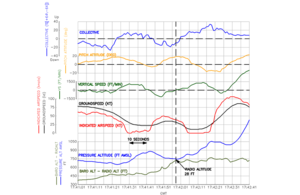News story
On approach to landing in reduced visibility just before night, a Sikorsky S-92A (G-LAWX) descended to within 28 ft of rising terrain close to a house. During the subsequent emergency climb at low indicated airspeed, engine torque increased to 131% and the pitch attitude was unstable, 14 October 2019.

On an approach to a private landing site in conditions of reduced visibility shortly before night, the pilots of a Sikorsky S-92A (G-LAWX) became uncertain of their position and the helicopter descended to within 28 ft of rising terrain close to a house. During the subsequent emergency climb at low indicated airspeed, engine torque increased to 131% and the pitch attitude of the helicopter was unstable. The helicopter made another approach to the landing site and landed without damage or injury to the occupants, 14 October 2019.
The investigation identified the following factors: • Standard operating procedures for altitude alert setting, stabilised approach criteria and crew communication were either absent or not effective,
• a strong desire as a customer-facing director not to inconvenience the client, which was potentially in tension with his obligation as the commander to ensure a safe flight,
• uncertainty about the Rules of the Air when landing, and
• attitudes, behavioural traps and biases likely to have contributed to the occurrence.
The circumstances of this serious incident indicate the need for greater awareness of the hazards of operating in degraded visual conditions and highlight the potential safety benefits of Point-in-Space approaches at landing sites.
The AAIB has made eight Safety Recommendations in these areas.
Media enquiries call: 01932 440015 or 07814 812293
Published 17 June 2021
Follow this news feed: HM Government





